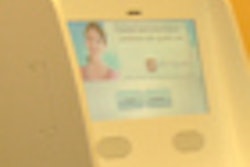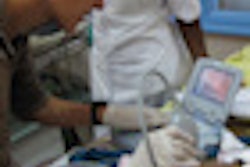GRAPEVINE, TX - Patient dissatisfaction is a recurring problem for radiology administrators and imaging providers, and one that can cause disruption, thus wasting a practice's precious time. But do angry patients have to be a fact of life? Not at all, according to a talk on Sunday at the AHRA meeting.
Leslie Farnsworth, CEO of FrogDog, a marketing and communications firm in Houston that serves healthcare clients, offered suggestions for soothing angry patients -- or better yet, preventing patients from reaching the boiling point in the first place.
"Angry patients can create a lot of disruptions: with other patients, and with staff," Farnsworth told attendees. "And these disruptions can waste a lot of time. But the fix can actually be pretty simple."
Farnsworth conducted a survey of AHRA members this past spring on the issue of patient dissatisfaction. She received 83 total responses; participants were able to choose multiple answers to each question, as well as write in responses.
The biggest reason patients get angry? Confusion, Farnsworth found: 50% of survey participants said that patients get angry because they are confused, or were confused at some point in the encounter with the department or practice. The next biggest reason for patient dissatisfaction was wait time, although only 21% of survey respondents cited this reason for patient disgruntlement. Further reasons for patient anger included billing mistakes, the way they were treated by staff, and the cost of the procedure, Farnsworth said.
"Confusion will always make people upset, especially when they're dealing with a health problem," she said. "It may be harder to solve wait time or billing problems, but confusion is something that can be addressed."
Thirty-six percent of survey respondents said that angry patients escalate the problem as far up the practice or department food chain as possible, taking their complaints to senior administrators and other supervisory bodies. Thirty-three percent said that disgruntled patients cause disruption among other patients and with facility staff. Still other ways patients express their anger is by reporting their experience to official organizations or to their friends and family, by not paying for services, or by going elsewhere.
In fact, Farnsworth's study found that the majority of dissatisfied patients still pay their bills. But there is a cost -- and that cost comes from concessions that practices offer to calm patients down. The study found that almost 40% of practices or departments offer some kind of concession to frustrated patients. Twenty-eight percent of survey respondents apologize for the problem and 27% explain what happened.
Farnsworth surveyed the AHRA audience as to what kind of concessions practices offer. Attendees said that concessions can include everything from Starbucks gift cards to gas cards, meal tickets, and transportation vouchers.
Simple solution?
Farnsworth invited attendees to list situations that cause patient frustration. Session participants cited scenarios such as longer wait times than the patient expected, missing orders (despite the staff's best efforts to procure them), patients' incorrect expectations about the prep for an exam, stressed and anxious parents waiting for their child's turn in the MRI, and even ob/gyn patients who show up for midterm ultrasound exams with an entourage -- not only their partner, but perhaps even both sets of grandparents and a few BFFs.
How to reduce confusion in these scenarios? Give an orientation, Farnsworth said.
"In my experience, with not only healthcare environments but also other business environments, incidences of client upset can be reduced by 70% or 75% just by having a conversation about what's going to happen," she said. "A conversation like this heads off confusion before it begins and manages a patient's expectations."
There are four steps radiology staff can take to reduce confusion and improve communication with patients:
- Explain in simple terms what is going to happen. "Explain where the patient is going, and what the procedure is," Farnsworth said. "I recommend scripting this with whomever on your staff deals with patient communication. Practice the role-play with them. It won't take long; at least, not as much time as dealing with an angry patient can take."
- Disarm the patient. "Be very direct with the person," Farnsworth said. "Say, 'Mrs. Johnson, I'm going to be honest with you here -- people often get upset at this point, when they find out the wait time can be up to an hour.' Just acknowledging that getting upset is understandable can diffuse anger."
- Co-build a solution. "Ask the patient what you can do to help the immediate situation. 'What can I do, Mrs. Johnson, so you won't be further upset?' Often patients come up with solutions that are easier than you'd think," Farnsworth said. " 'OK, Mrs. Johnson, will you promise to ask me questions if you don't know what's going on?' Make sure they verbally agree. You want them to co-build the solution with you."
- "Postsell" the solution. "Confirm with the person that they understand the contract you've made together," Farnsworth said. " 'Mrs. Johnson, now you're going to ask me a question when you're confused, right? And you're not going to get upset, because you know you can ask me what's going on.' "
Not a silver bullet
Farnsworth conceded that even with simple, direct communication, patients are not going to be pacified every time.
"You can't prevent every angry patient situation, even when you get someone to tell you they're not going to get angry," she said. "But it's helpful to think from their perspective. We get caught up in our to-do lists and forget that the patient may be frightened or tired. Things are happening fast -- and getting 'talked at' may not work to bring them up to speed. The more practices can prevent patient confusion, the more time and money they can save."




















